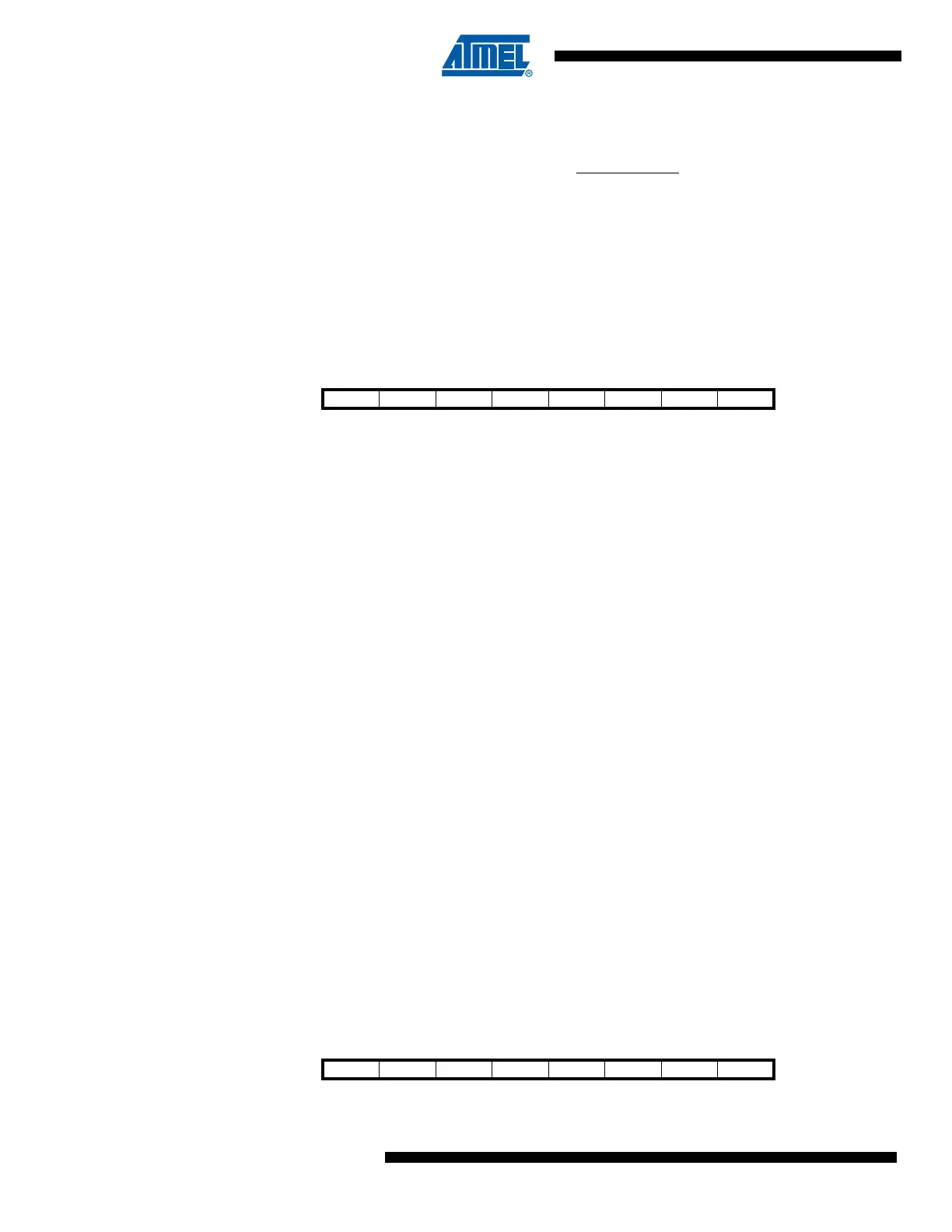258
7679H–CAN–08/08
AT90CAN32/64/128
The period of the CAN controller system clock Tscl is programmable and determines the individ-
ual bit timing.
If BRP[5..0]=0, see Section 19.4.3 ”Baud Rate” on page 242 and Section • ”Bit 0 – SMP: Sample
Point(s)” on page 259.
• Bit 0 – Reserved Bit
This bit is reserved for future use. For compatibility with future devices, it must be written to zero
when CANBT1 is written.
19.10.9 CAN Bit Timing Register 2 - CANBT2
• Bit 7– Reserved Bit
This bit is reserved for future use. For compatibility with future devices, it must be written to zero
when CANBT2 is written.
• Bit 6:5 – SJW1:0: Re-Synchronization Jump Width
To compensate for phase shifts between clock oscillators of different bus controllers, the control-
ler must re-synchronize on any relevant signal edge of the current transmission.
The synchronization jump width defines the maximum number of clock cycles. A bit period may
be shortened or lengthened by a re-synchronization.
• Bit 4 – Reserved Bit
This bit is reserved for future use. For compatibility with future devices, it must be written to zero
when CANBT2 is written.
• Bit 3:1 – PRS2:0: Propagation Time Segment
This part of the bit time is used to compensate for the physical delay times within the network. It
is twice the sum of the signal propagation time on the bus line, the input comparator delay and
the output driver delay.
• Bit 0 – Reserved Bit
This bit is reserved for future use. For compatibility with future devices, it must be written to zero
when CANBT2 is written.
19.10.10 CAN Bit Timing Register 3 - CANBT3
Tscl =
BRP[5:0] + 1
clk
IO
frequency
Bit 76543210
- SJW1 SJW0 - PRS2 PRS1 PRS0 - CANBT2
Read/Write - R/W R/W - R/W R/W R/W -
Initial Value - 0 0 - 0 0 0 -
Tsjw = Tscl x (SJW [1:0] +1)
Tprs = Tscl x (PRS [2:0] + 1)
Bit 76543210
- PHS22 PHS21 PHS20 PHS12 PHS11 PHS10 SMP CANBT3
Read/Write - R/W R/W R/W R/W R/W R/W R/W
Initial Value-0000000

